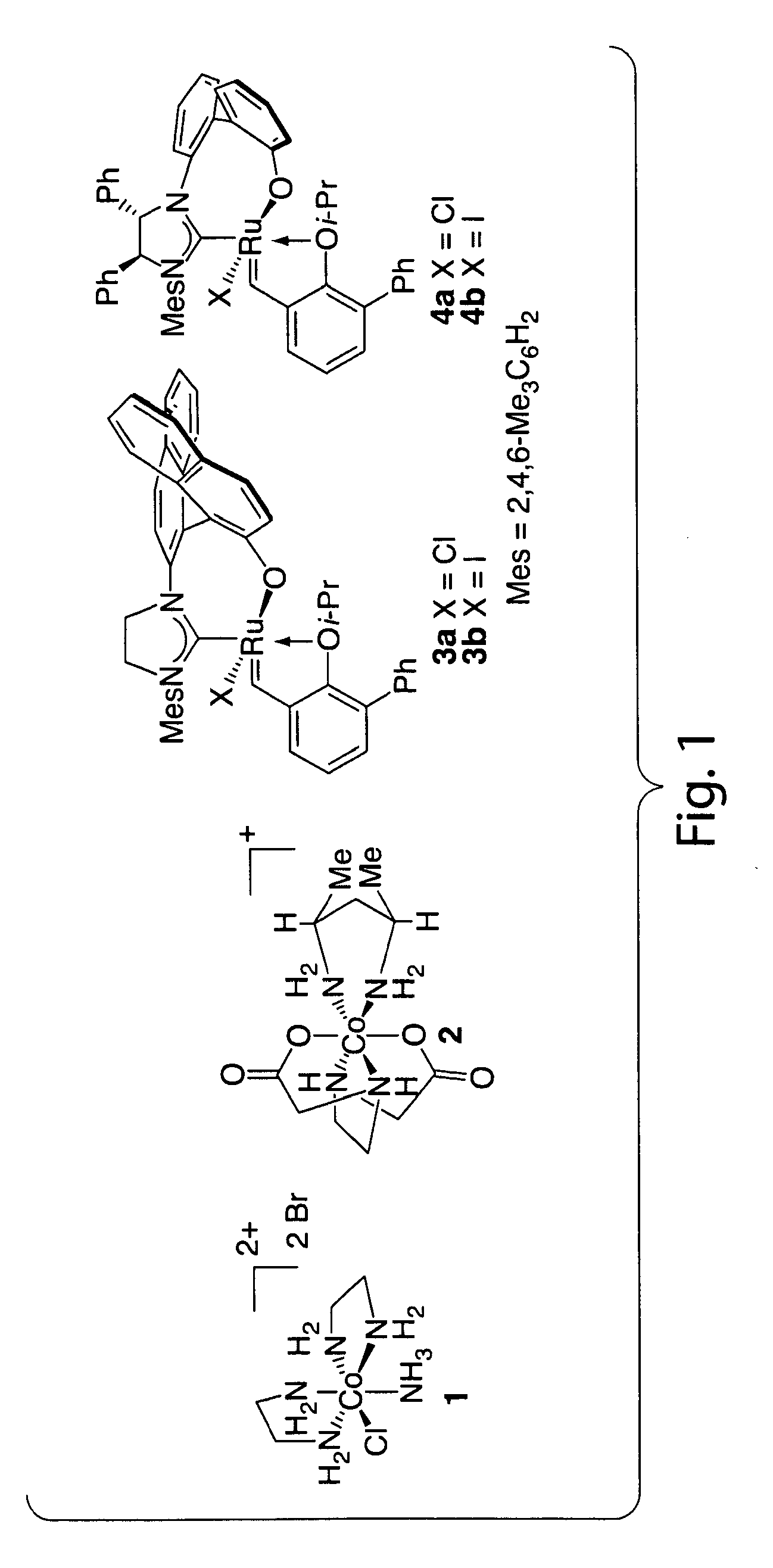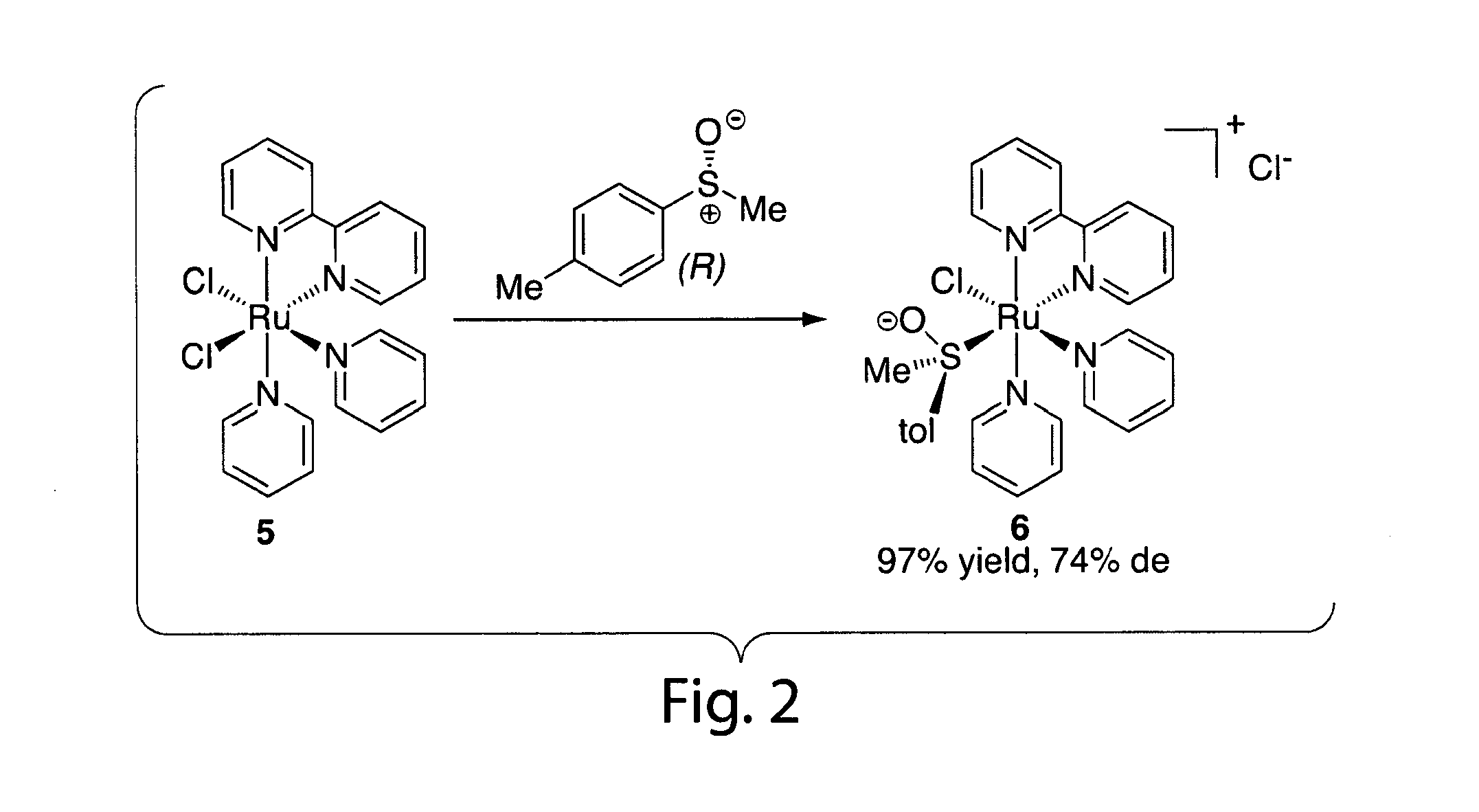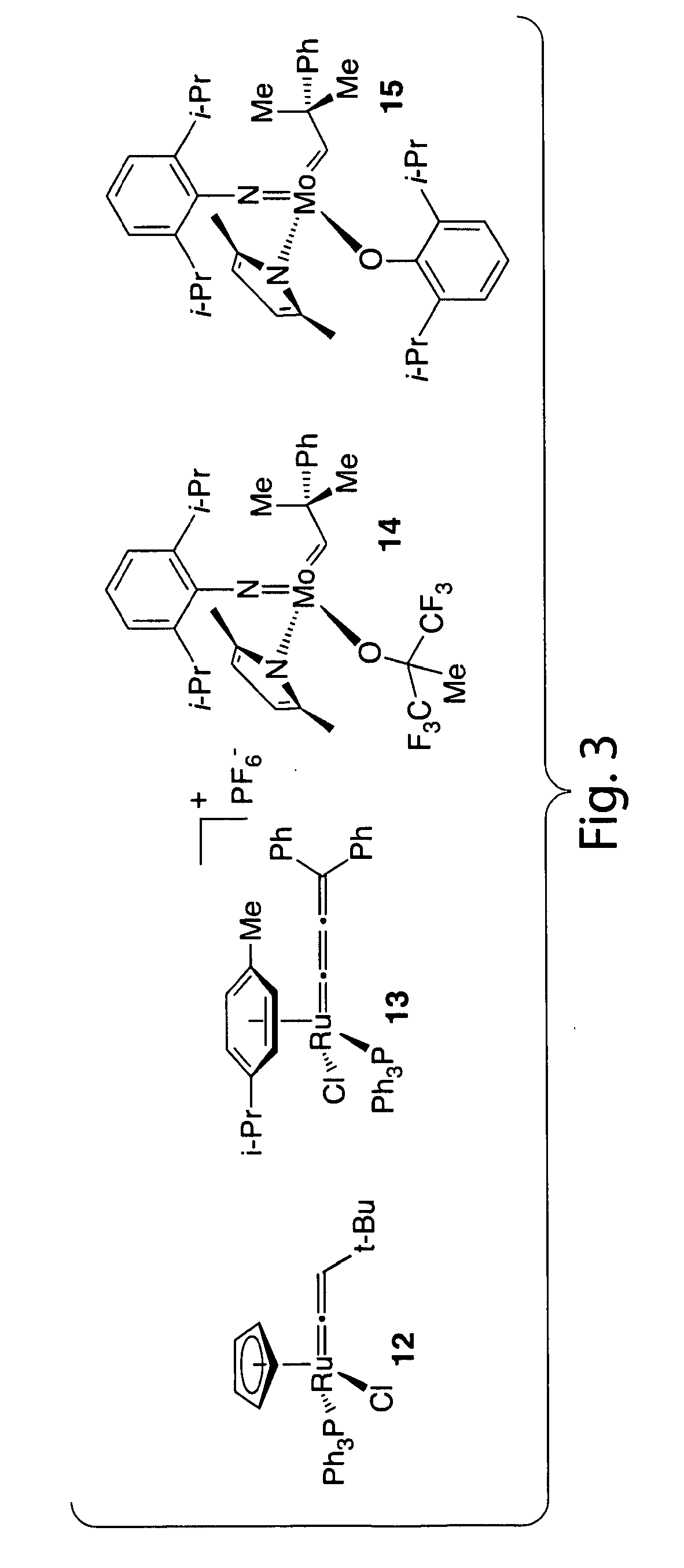Catalysts for metathesis reactions including enantioselective olefin metathesis, and related methods
a technology of enantioselective olefin and catalyst, which is applied in the direction of organic compound/hydride/coordination complex catalyst, organic compound/chemical process catalyst, organic compound without c-metal linkage, etc., can solve the problems of complex racemization, difficult stereoselective synthesis of metal complexes having a stereogenic metal center, and other problems
- Summary
- Abstract
- Description
- Claims
- Application Information
AI Technical Summary
Benefits of technology
Problems solved by technology
Method used
Image
Examples
example 1
[0145]The following example describes non-limiting examples of the stereoselective synthesis of stereogenic metal complexes.
[0146]Examination revealed reaction of mono-TBS-protected BINOL 23, substituted at the 3 and 3′ positions with Br, with one equivalent of Mo bis(pyrrolide) 22a-b led to the clean formation of monoalkoxide complex 27a-b (Table 1). Mo bis(pyrrolide) may be synthesized according to procedures known to those of ordinary skill in the art, for example, according to the scheme shown in FIG. 21. Monoalkoxide 27a, containing a stereogenic Mo center, was formed in a 19:1 d.r. (entry 1, Table 1). Use of Mo bis(pyrrolide) 22b led to the formation of Mo monoalkoxide 27b with 7:1 diastereoselectivity (entry 2, Table 1).
TABLE 1Stereoselective synthesis of stereogenic Mo-based complexes.EntryAlcoholMo Bis(pyrrolide)ProductTemp (° C.) conv (%)a,bd.r.a,c 1 222a 22b27a 27b22 22>98 >9819:1 7:1 3 4 522a 22b 22b28a 28b 28b22 22 60>98 90 >98 >20:1 7:1 6:1 6 7 822a 22b 22b...
example 2
[0150]The following example describes the stereoselective synthesis of additional metal complexes comprising a stereogenic metal atom.
[0151]A number of other alcohol ligands were also screened, and the results are shown in Table 2. TBS-protected BINOL 31 (Table 2), bearing methyl substituents at the 3 and 3′ positions, led to the formation of monoalkoxide complex 34a in a 5:1 d.r. (entry 1, Table 2). Monoalkoxide complex 34b was formed in a 3:1 d.r. (entry 2, Table 2). With pentafluorophenyl substituents at the 3 and 3′ positions, alcohol 32 generated monoalkoxide complex 35a in a 4.5:1 d.r. (entry 3, Table 2); however, the reaction of alcohol 32 with Mo bis(pyrrolide) 22b proceeded to 20:1 d.r., but the reaction only proceeded to 19% conversion in 1 h (entry 5, Table 2). At 60° C., the reaction was complete within 1 h and 36a was generated exclusively in a 17:1 d.r. (entry 6, Table 2). When reacted with Mo bis(pyrrolide) 23b, alcohol 33 failed to deliver any desired product, even a...
example 3
[0152]Sterically demanding alcohol 33 was tested in the substitution of Mo bis(pyrrolide) 16a-b (FIG. 23), which carries a smaller 1-adamantylimido ligand. Unlike with smaller alcohols, such as 23, 33 reacts with Mo bis(pyrrolide) 16a to furnish monoalkoxide complex 37a exclusively (bis(aryloxide) is not formed). Moreover, complex 37a was generated as a single diastereomer (FIG. 23). 37b was not formed from Mo bis(pyrrolide) 16b, even at 60° C.
PUM
| Property | Measurement | Unit |
|---|---|---|
| enantiomeric excess | aaaaa | aaaaa |
| enantiomeric excess | aaaaa | aaaaa |
| enantiomeric excess | aaaaa | aaaaa |
Abstract
Description
Claims
Application Information
 Login to View More
Login to View More - R&D
- Intellectual Property
- Life Sciences
- Materials
- Tech Scout
- Unparalleled Data Quality
- Higher Quality Content
- 60% Fewer Hallucinations
Browse by: Latest US Patents, China's latest patents, Technical Efficacy Thesaurus, Application Domain, Technology Topic, Popular Technical Reports.
© 2025 PatSnap. All rights reserved.Legal|Privacy policy|Modern Slavery Act Transparency Statement|Sitemap|About US| Contact US: help@patsnap.com



